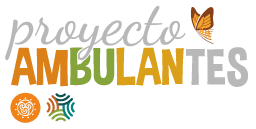Juan
Zimatlán, Valles Centrales, Oaxaca
Caminos carried out their mural initiative in three communities in the Valles Centrales of Oaxaca in 2022. In testimonies they detail the process of mural development and the comments of community members who collaborated or commented on the final result.
Among these people, Juan, a community authority, expressed his surprise at the mural technique and the type of images that were used which reflected the reality of the people living in the communities. He also commented on the importance of the messages the murals shared: “Truthfully, this type of drawing is not something I’d seen before…. The message it gives is evident even to those who can’t read; to wash hands and use a facemask. In particular, it’s clear that the mural shows a woman from the community, which is very good.”
When asked how he believed the message could be useful, he responded: “Words aren’t necessary, the images are clear and help a lot. This helps because it [COVID] is something which is going to continue, and more now with the change of season.”
The imagery of the murals is especially important because many of the people of the region are not literate in Spanish or in their mother languages which are variants of Zapoteco.
The fact that a large part of the murals were images was so that the greatest percentage of people would be able to access the information. The small amount of text the murals do contain is in Spanish and in the Zapoteco variant of each community, respecting the identity and culture.
Daniel, another person who participated in the design of the murals shared that he had enjoyed and learned from the process: “The customs are very closed, and we didn’t believe in COVID, but when there began to be cases, we started to believe that the disease was very contagious. [During the mural process I learned] to meet other people, work together, and that we should continue to take precautions since COVID has not gone away yet.”
About subjects for similar projects, Juan, a community authority, suggested: “Support and orientation about the challenges of migration and the human rights of indigenous people, because [the ranches] take advantage of people. That could help us.”
